- Home
- Machining techniques
- CNC Machining Services
- Cooperative supply services
- Designs
- Materials
- Finishing Services
- Shop
- Products
- Guide
- About Us
- Contact Us
2023.4.13
Water jet cutting is a process technology that uses high-pressure water flow to cut materials. This technology uses high-pressure water flow to increase the water pressure intensity to 400 megapascals. The water flow increases the water flow speed to 800-1000 meters/second through a special nozzle, and then applies high-speed impact force on the material surface to cut the material. The water flow used in water jet cutting can add abrasive to increase the cutting effect and expand the range. This technology not only can cut various common materials, but also has advantages such as high precision, low noise, and no pollution, making it widely used in the automotive, aerospace, manufacturing, and construction industries. In this article, we discuss the suitable materials for waterjet cutting.
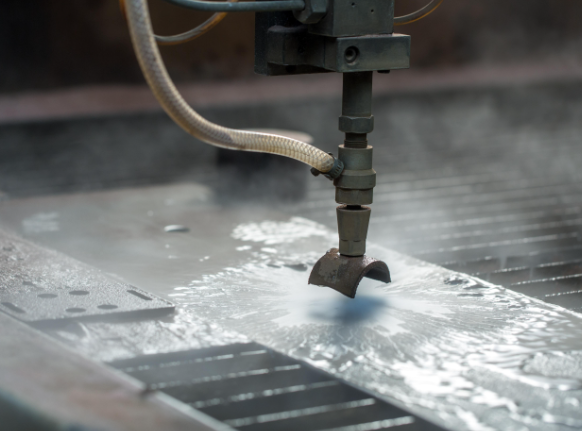
Advantages of cutting metals with waterjet machines:
– The edges are very clean after cutting, ready for any further processing
– Capable of stacking and cutting thin plates
– Safe, environmentally friendly, and easy to operate
– Cutting metal without pre drilling
– Smooth cut surface without burrs to reduce secondary precision machining
– No thermal effect, does not change the chemical and mechanical properties of the metal
– Can cut any material, shape, size, or thickness without changing tools
Water jet cutting machines are becoming one of the most versatile and high-quality cutting equipment in the world, equally suitable for the stone processing industry, capable of precise cutting of natural and artificial stones. Water knives can clean cut granite, marble, ceramic tiles, rock slabs and other stone materials, overcoming the problems brought by traditional cutting methods. Due to the wear and tear of expensive cutting tools, using drill bits, saws, and milling cutters on hard grinding stones is both slow and expensive. A water jet usually produces more precise cutting because it does not require force to be applied to the material, unlike cutting blades and tools, which exert significant force on the stone, especially when mitered at a 45 degree angle.
Advantages of waterjet cutting stone:
– High efficiency and low cost
– High cutting accuracy
– Capable of cutting complex designs
– Widely used
– Different material types or thicknesses do not require tool replacement
– Simple and easy to use
– Environmentally friendly, does not generate dust pollution
Waterjet cutting is ideal for cutting glass materials, including tempered, laminated, and annealed glass. Cutting glass can be a time-consuming and costly process, as other equipment requires a large amount of tool replacement during the cutting process. The design of the five axis water jet cutting machine means that you can easily cut various specifications of glass panels without the need to replace the cutting tool, achieving continuous cutting operations. No matter how complex the cutting pattern is, the water cutting process can finely complete the cutting and reduce any defects that may be caused during the cutting process.
Advantages of cutting glass with waterjet:
– Efficient and cost-effective
– High precision cutting
– From concept to completion in just a few minutes
– Accurate and complex design
Today, composite materials come in various forms, such as carbon fiber and glass fiber. As such a delicate and lightweight material, other cutting processes typically cause cracks, burrs, and other defects within the fiberglass material. Abrasive water jet cutting eliminates all the aforementioned issues with its ultra precise and fast cold cutting process. The cold cutting form of the water jet does not cause thermal effects on the composite material, ensuring that the material is in its optimal state from start to finish.
Water jet cutting technology is usually used for carbon fiber, fiberglass, bulletproof materials, insulation materials, etc. It has been proven that water jet cutting has absolute advantages in the field of composite material cutting.
Advantages of water jet cutting for composite materials:
– No melting, dust, or smoke
– Capable of stacking and cutting thin plates
– Efficient and cost-effective
– High precision cutting
– Smooth cut surface without burrs to reduce secondary precision machining
– Low loss
Water jet cutting stands out in rubber and plastic processing due to its advantages in cutting quality and safety and environmental protection. This cold cutting process is chosen by many large rubber and plastic manufacturers around the world because there is no risk of producing highly toxic and dangerous smoke. Due to the absence of thermal effects on the cutting material, this process also helps to achieve high-quality and consistent product finishing. The production line can improve processing efficiency by stacking. Materials can be stacked up to 100mm at a time, and cutting accuracy can also be guaranteed accordingly.
Advantages of water jet cutting for rubber & plastic
– No melting, dust, or smoke
– Up to 200mm stackable cutting
– Efficient and cost-effective
– High precision cutting
– Smooth cut surface without burrs
– Low loss of materials
The use of specialized water cutting equipment can optimize many aspects of food processing, from improving hygiene levels to ensuring consistency in speed and cutting. Adding a water cutting automation system to your food processing process can replace manual cutting to improve production line processing efficiency. Due to the fact that water jet cutting does not require blades, there is no need for any maintenance, polishing, or cleaning of the machine.
From meat processing to vegetable slicing, to the manufacturing of chocolate and cake products, our water knife system excels in consistently cutting all types of food. Due to the use of pure water cutting technology, there is less cell damage to food, thereby extending its shelf life. Due to the lack of the need for cutting tools or other forms of cutting tools, the safety of workers’ operations during the machining process is greatly improved.
Advantages of cutting food with waterjet:
– High efficiency and cost-effectiveness
– Longer shelf life
– Reduce product waste
– No cross contamination
– Simple and easy to use
– Can achieve complex graphic cutting
– Cutting material wet fiberboard
Wood processing is one of the most common scenarios in the manufacturing industry. Especially, highly engineered wood is versatile and has its applications in different sectors. Engineered wood is better than natural wood, as it is perfect for different purposes due to its special properties. You can find high density, high strength, and custom thickness in engineered wood pieces. However, the way you cut the wood can make a difference in the manufactured products. From plywood to veneer, everything is manageable with waterjets. Easy free-form cutting, narrow cuts, no splintering, and fast setup time- these are some reasons for choosing waterjets to cut wood.
Advantages of waterjet cutting wood:
– No material burning
– No tool wear
– Environmentally friendly
– No dust or smoke
– Efficient and cost-effective
– High precision cutting
– Low loss of materials
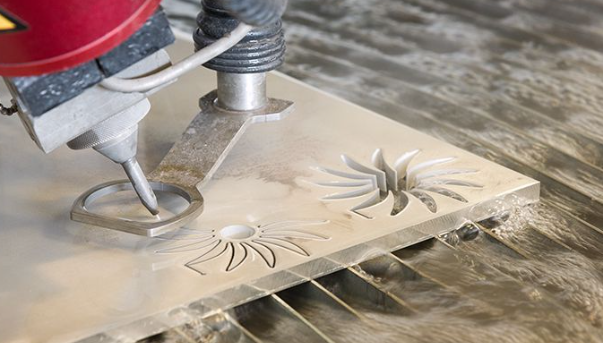 What Is Waterjet Cutting – Applications, Uses, Types, How Does Waterjet Cutting Work
What Is Waterjet Cutting – Applications, Uses, Types, How Does Waterjet Cutting Work
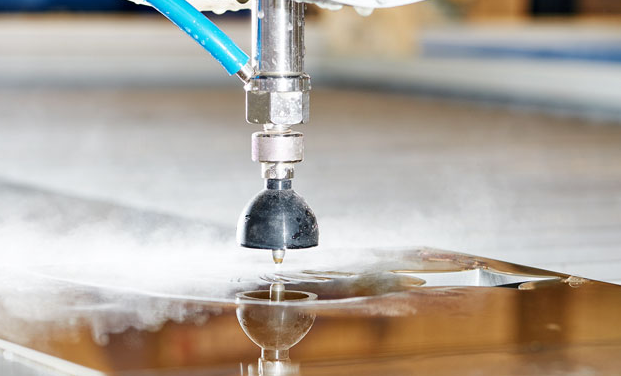 Waterjet Glass Cutting: Advantages, Applications, How to Cut Glass on a Waterjet
Waterjet Glass Cutting: Advantages, Applications, How to Cut Glass on a Waterjet
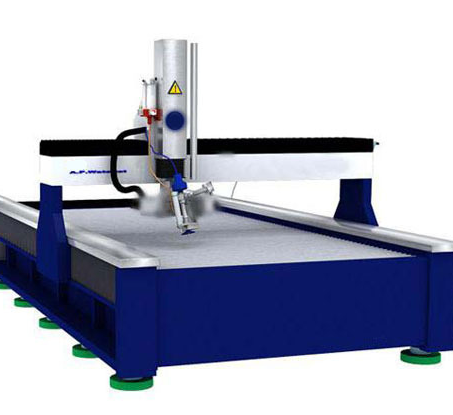 Price & Costs of Waterjet Cutting – What Factors Influence Waterjet Cutting Costs
Price & Costs of Waterjet Cutting – What Factors Influence Waterjet Cutting Costs
 Best Waterjet Machines – How to Choose the Right Waterjet Cutting Machine
Best Waterjet Machines – How to Choose the Right Waterjet Cutting Machine
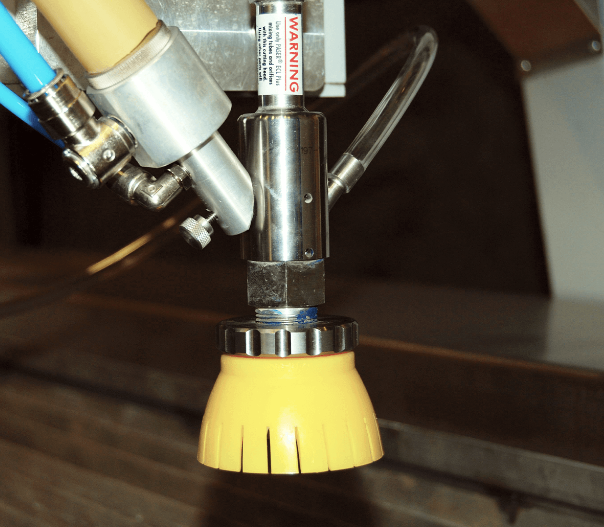 What is the Best Cutting Distance for the Waterjet Head?
What is the Best Cutting Distance for the Waterjet Head?
 Spring Material Types (Properties, Grades, Uses) & Best Selection for Your Project
Spring Material Types (Properties, Grades, Uses) & Best Selection for Your Project
